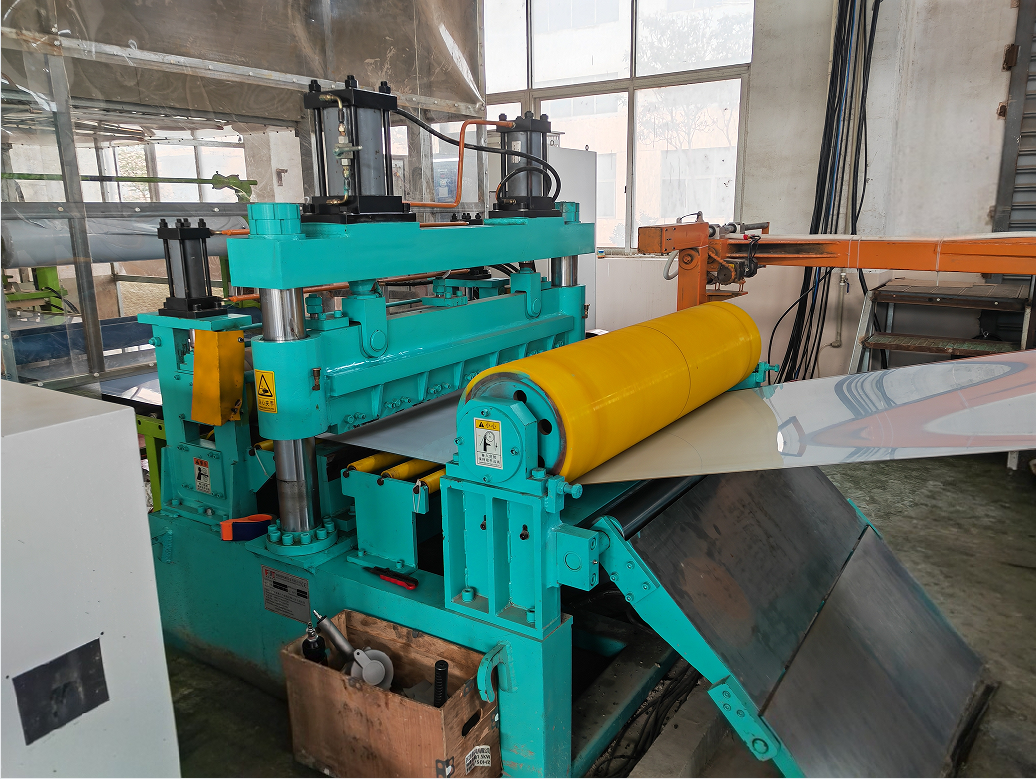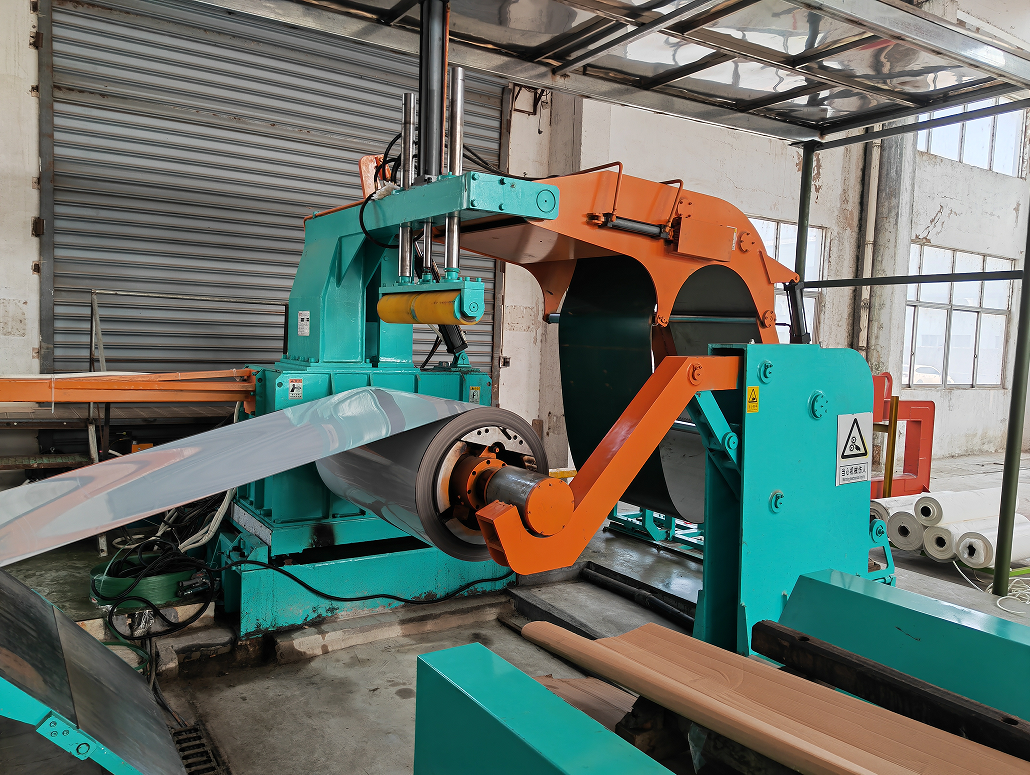Simple Ways to Extend the Life of Your Metal Slitting Machine
Consistent and easy care helps your metal slitting machine last longer. Many workers forget small jobs, but these matter a lot. Industry data shows the main reasons for early breakdown are:
- Not doing regular maintenance
- Bad lubrication
- Misalignment
- Letting dust or debris pile up
- Operator mistakes
You do not need special skills to stop these problems. Start now to keep your machine working well.
Key Takeaways
- Clean your metal slitting machine often to stop rust and harm. Use safe cleaners and stick to a cleaning plan.
- Lubricate moving parts a lot with the right oils or greases. This helps the machine work well and stops damage.
- Check blades to see if they are sharp or broken. Replace or sharpen them on time for good cuts and to protect the machine.
- Keep rollers and guides straight and set the right tension. This helps stop bad cuts, jams, and wasted material.
- Follow safety rules and get the right training before using the machine. This keeps you safe and helps the machine last longer.
Cleaning and Lubrication
Cleaning Surfaces and Parts
You should always keep your metal slitting machine clean. Dust, oil, and metal chips can build up fast. If you let these stay, they can cause rust and even damage moving parts. Most manufacturers say you should clean the machine after every use. This habit helps stop rust and keeps your machine working well for a long time. If you work in a dusty shop, daily cleaning is best. If your area stays clean, you can clean the machine once a week.
Tip: Set a cleaning schedule and stick to it. This makes cleaning part of your routine and helps you avoid forgetting.
When you clean, focus on these parts:
- Surfaces and covers
- Blades and guide rails
- Rollers and inside the machine
For cleaning, use the right products. Aqueous-based and bio-based cleaners work well for most metal parts. They are safer for you and better for the environment. If you use strong cleaners, do not leave them on the metal for too long. This can cause pitting or corrosion, especially on stainless steel. Always check the cleaner label and follow the instructions.
Lubricating Moving Components
Lubrication keeps your machine running smoothly. Moving parts like bearings, arbors, and drive systems need oil or grease. If you skip this step, parts can wear out faster and the machine may break down.
Make sure you use the right lubricant for each part. Check the manual for the best type and how often to apply it. Most machines need lubrication after cleaning or at set times during the week. Wipe away old grease and dirt before adding new lubricant. This helps the oil reach all the moving parts.
A good lubrication routine:
- Wipe down the area first.
- Apply the correct lubricant.
- Move the part to spread the oil or grease.
- Check for leaks or extra buildup.
Regular cleaning and lubrication are simple steps that protect your investment and keep your metal slitting machine in top shape.

Blade and Tooling Care
Inspecting Blades
You should check your blades often. This helps you get clean cuts. It also keeps your machine working well. Sharp blades cut better and last longer. Dull or broken blades can make rough edges. They put more strain on the motor. This can even hurt the machine. Look for chips, cracks, or uneven spots on the blade edge. Clean blades work best, so wipe off any dirt after each use.
Tip: Sharp blades help the motor work less and move material smoothly.
Industry rules say blades should have these features for best results:
- Blade edge angles from 20° to 25° for neat cuts
- Flat, straight-edge blades for steady work
- Thin-profile blades (0.5 mm or less) for thin or layered materials
- Low-friction coatings like titanium nitride (TiN) or Teflon to stop sticking and slow down wear
- Micro-tolerance sharpness, usually tighter than ±0.01 mm, for even cuts
You should also check if the blade is lined up right and mounted tight. If blades are not lined up, cuts will not be even. This can also wear out parts faster. Test the pressure and make sure all parts are tight. This helps stop shaking.
Replacing Worn Parts
You need to change blades and tooling when you see damage. Waiting too long can make cuts bad and waste material. It can also be unsafe. Watch for nicks, chips, or cracks. If you use your machine a lot, sharpen blades every 40–60 hours. If you use it less, sharpen every 80–100 hours. Change blades that are cracked, chipped, or very thin.
Storing your tooling the right way keeps it in good shape. Always clean and oil adaptors after you use them. Put tooling in a dry place with steady temperature. Label each tool holder with its type and how much it was used. Do not leave tools in bad places. This stops rust and damage. Keeping things organized helps you find tools fast and keeps them safe.
Checking and changing blades and tooling on time keeps your machine safe and makes your cuts better.
Alignment and Tension
Checking Alignment
You need to check the alignment of rollers and guides often. When rollers or guides are not lined up, you may hear strange noises like squealing, rattling, or grinding. These sounds mean parts are rubbing or under stress. Misalignment can also cause crooked cuts, wavy edges, and jams. Your product quality drops, and you may waste material.
To keep everything in line, follow these steps:
- Inspect roller and guide alignment before each shift.
- Use tools like straight edges, inspection mirrors, and flashlights to spot problems.
- Clean rollers and guides to remove dirt that can push parts out of place.
- Adjust roller positions and tighten settings if you find misalignment.
- Keep a log of all checks and repairs.
Tip: Train your team on alignment checks and keep records. This helps you spot patterns and fix issues early.
You should also schedule deeper checks. Every six months, change lubricants, inspect rollers, and recalibrate the machine. Once a year, do a full overhaul. Check for worn parts and replace them if needed. Use the table below to guide your checks:
Tension Control
Proper tension keeps your material flat and your cuts even. If tension is too high or too low, you may see curling, wrinkles, or uneven strip widths. Bad tension can also cause the material to jam or the rolls to telescope.
You can use special tools to measure tension. Load cells, tachometers, and laser sensors help you check tension at different points. These tools give you quick and accurate readings. Make sure you calibrate them often for best results.
- Adjust tension based on the type and thickness of your material.
- Test and calibrate tension controls regularly.
- Use closed-loop feedback systems if your machine supports them.
Keeping the right tension prevents defects and saves you time and money.
Metal Slitting Machine Maintenance
Fastener Checks
Loose bolts or screws can make your metal slitting machine break. If fasteners are not tight, you might hear rattling or feel shaking. These small problems can turn into bigger ones if you do not fix them. You should check all bolts, screws, and nuts every week. Use a wrench or screwdriver to make sure each one is tight.
Tip: Make a list of all the main fasteners on your machine. Mark each one after you check it. This helps you remember and not miss any.
If you find a loose or missing fastener, fix it right away. Pay extra attention to parts that move a lot, like rollers, blade mounts, and guide rails. Keeping fasteners tight helps your machine work well and stay safe.
Electrical and Hydraulic Systems
Your metal slitting machine needs both electrical and hydraulic systems to work. Problems with these can stop your machine or make it unsafe. You should look for common problems like:
- Hydraulic fluid leaks or low oil
- Worn or broken seals and hoses
- Uneven hydraulic pressure
- Blocked or sticky valves
- Loose electrical wires
- Motors or contactors that do not work
- Broken foot pedal switches
You can stop many of these problems by checking often. Look at all hoses and seals for leaks. Tighten hydraulic parts and change worn pieces. Clean electrical boxes to get rid of dust and dirt. Check all wires for looseness or damage. Use a multimeter to test circuits if you see a problem.
Always use lockout/tagout steps before you do any work. Turn off the power and make sure the machine cannot start by mistake.
Wear the right safety gear, like gloves and safety glasses, when working on these systems. Only trained people should fix electrical or hydraulic parts. Keep emergency stop buttons easy to reach and test them often.
A good routine for these systems includes:
- Checking hydraulic oil and adding more if needed
- Cleaning and looking at electrical panels
- Testing emergency stops and safety covers
- Having a trained person check the machine often
Doing these things helps your metal slitting machine stay safe and work well.

Operator Training and Safety
Training Essentials
You must have training before using a metal slitting machine. Good training helps you set up and use the machine safely. You also learn how to check and adjust it. Industry rules say you must know safety rules, how to use the machine, and what to do in an emergency. Here are the main things every operator should learn:
- Safety rules and what to do in emergencies
- How to set up, adjust, and fix the machine
- How to handle materials, like loading and unloading coils
- How to check quality and inspect your work
- Rules for handling waste the right way
- How to use personal protective equipment (PPE) the right way
You should also practice with a supervisor watching you. This helps you spot problems and fix them quickly. Taking refresher courses helps you remember what to do and avoid mistakes.
Tip: If you do not understand something, ask questions. Good training helps stop accidents and keeps the machine working.
Safe Operation
Safe operation means wearing the right gear and following good habits. You must wear PPE every time you use the machine. This keeps you safe from cuts, loud noise, and flying pieces. The table below shows what PPE you need and why:
Tie back long hair, take off jewelry, and wear clothes that fit. Never skip safety steps, even if you are in a rush. Always check that guards and sensors work before starting.
Metal Slitting Machine Safety
You can stop most accidents by following safety rules and paying attention. Always check blades and tension before you start. Keep your hands away from moving parts. Never use the metal slitting machine without training or a supervisor. Safety drills and machine checks help you get ready for emergencies.
- Watch for warning signs and alarms.
- Tell someone right away if you see something unsafe.
- Join safety meetings and drills.
Training often and using safe habits keeps you safe and helps your machine last longer.
You can help your metal slitting machine last longer by doing easy things each day. Clean the machine, add lubricant, and check the blades often. These steps stop problems and help your work go well. Many companies save money and have fewer problems when they do these things:
- They spend less on repairs and have fewer breakdowns.
- The machine works longer and makes more products.
- The machine is safer and works better.
Start these habits now. You will see your machine work well and save money for a long time.
FAQ
How often should you clean your metal slitting machine?
You should clean your machine after every use. If your shop is very dusty, daily cleaning works best. Regular cleaning helps prevent rust and keeps your machine running smoothly.
What signs show that a blade needs replacing?
Look for chips, cracks, or dull edges on the blade. If you see rough cuts or hear strange noises, replace the blade. Sharp blades help you get better results and protect your machine.
Why is proper tension important during slitting?
Proper tension keeps your material flat and your cuts even. Bad tension can cause wrinkles, jams, or uneven strips. You save time and material when you keep tension at the right level.
Can you do maintenance yourself, or do you need a technician?
You can do basic maintenance like cleaning, lubricating, and checking fasteners. For electrical or hydraulic repairs, call a trained technician. This keeps you safe and protects your machine.

